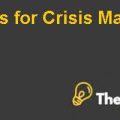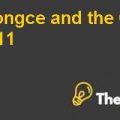
RISK MANAGEMENT FOR DERIVATIVES
INTRODUCTION
Risk management is significant for numerous institutions and individuals and it is the elemental aspect of business operations as for where to invest, where to take the risk through investment and in return earn maximum profit out of that investment. A significant element for the success within the limits of this process is the management of the risk with the return. Managing risks is probably an easy task to perform but when it comes to measurement of risk then it becomes difficult and its level of difficulty increases with respect to the risk level. In business, there is a saying that “what gets measured gets managed”. It means that managing risks is easier than measurement of risks. In general terms, risks refer to the change in expectation against the real outcome. From the business point of view, risk refers to the change in prices that a person is willing to pay against the expected return.
In order to measure risks, there are several factors that actually represent itself as a risk such as Beta. The equity version of Beta is normally used for the measuring the risk, which measures the relationship of an asset. Higher Beta stocks and portfolio means these two are more volatile in terms of return with the relation of market return and this market return represents the overall market return. Beta 1 represents risk associated with assets that is similar to the market return. If Beta is greater than 1, then the risks associated with the asset is more volatile than the Beta 1 and it is more volatile than the market portfolio, which generates higher returns with respect to the level of volatility. On the other hand, Beta has lower value than 1 that is not as risky or has lower risk associated and will generate lower expected returns.
MANAGING THE PORTFOLIO RISK
Managers who are managing the portfolio uses the Beta for measuring the risks with respect to return. If these managers are willing to investment in the risky portfolio then they increase the Beta of the portfolio and if these managers are seeking the lower risky then they will adjust the Beta with their risk level that they are willing to take on their investment. The Capital Asset Pricing Model is the most appropriate approach for calculating the portfolio risk.
Risk involve in bonds are the fluctuation in interest rates and this is the most important source of risks as it has direct relationship with the prices of bonds. If the interest rate is more volatile then the fluctuation in prices of bonds will fluctuate even more. The risk associated to bonds is calculated by using the Duration concept. In Duration approach, the Modified Duration is used frequently. Higher modified duration means that the price volatility is high with respect to the fluctuation in interest rates.
The common factor in equities and bonds is only the risk factor. For equities, Beta is the risk factor and for bonds, the modified duration is the risk factor and these two factors are same with respect to their characteristics. For each of the segments, risk can be measured and it will be adjusted with the risk tolerance that each segment has. In each of these two cases, the good thing for these two assets classes is that both of them have single risk factor measure and holders of these two assets classes are either concerned about the Beta or the modified duration. On the other hand, derivative securities are more diverse as it incorporates more risk factors to measure the risk.
RISK MEASURES FOR DERIVATIVES
In this case, the risk is defined and interpreted as the sensitivity of the price that is changed by using the factors associated with it that directly or indirectly affect the value of an asset. In addition, more sensitive price means that there is a lot of risk. The risk associated with derivatives are determined by using the following factors:
Option Pricing Model
This is also known as Black Scholes Model, and in this European call option is the simple factor that determines the risk.
The formula for the European call option is:
European call option value
Where N represent the Cumulative Standard Normal Distribution Function
Symbols in this formula as described as below:
S= current stock price
T= time to exercise the option
K= option strike price
r = risk free rate
e = exponential term
σ = standard deviation
ln = natural log
This is the basic option pricing model that describes that the European call option value is dependent upon these five factors value such as underlying value of an asset, risk-free rate, standard deviation or volatility, time to maturity or time to exercise the option, and exercise or ......................
This is just a sample partial case solution. Please place the order on the website to order your own originally done case solution.
This technical note discusses the basis for the measure of risk variants. It introduces various measures of risk variants: Delta, Gamma, Vega, Rho, and Theta. Although the note focuses on the price risk (Delta) and the risk of Delta (Gamma), it is at risk of volatility (Vega), interest rate risk (Rho), and time decay (Theta). In addition to providing key findings and calculations, a full description of the note hedge Delta. "Hide
by Robert M. Conroy, 18 pages. Publication Date: 03 Oct 2008. Prod. #: UV1047-PDF-ENG











